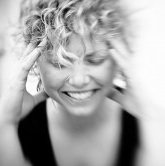Relationships are the new ashram.
You can train your heart to be open and to enjoy to-good-to-be-true-why-don’t-you-pinch-me kind of relationship buddings without disclaimers, walls and guards. To be momentous, to be as present as possible, to roll with it, to savor it with a big open heart channel takes courage, bravery and balls – because you know the risk of having an open heart on the line is one of great uncertainty.
Being OK with unknowns is a good practice. Fears, baggage and insecurities fly up in the space of no details or plans, or lots of ‘ifs’ with no definites in sight. And, sorting through all of that is a worthwhile exercise so that one can learn the beauty of the momentous present unattached to any illustrious future outcome. (Remember: Life is not about answers, but rather uncertainty and handling that with grace.) And, somewhere in the enmeshment and boundaries, is the lesson of letting go fully.
Because enveloped in love’s meaning is a clause about freedom from attachments and restrictions – and that kind of love includes being able to let go fully of the being we love with that very same open heart that embraced their wholeness at the start. (Love is a verb. It moves.)
Fear arises when there’s an attachment to an outcome – to the happily ever after, even if you know in your heart of hearts that something just isn’t right. When this happens, you lose your power and clarity in the present moment because you can’t walk away easily with those sticky attachments about how things should be, or how you want them to be.
When it comes to this love business, being ‘committed but not attached’ is a healthy space to hold in order to hold your own and avoid deferring your power to the significant other with whom you’re orbiting.
Clinging to a desired outcome in some imaginary future or acting out of fear of losing what you have doesn’t support all that can be in the moment-at-large-and-present. It deters and restricts the expansive spontaneity of what is in front of you now. Being unattached to outcome informs a much stronger and much more clear future of possibility.
Ralph Blum notes a healthy relational motif in the Book of Runes: “… In love relationships, in business matters, in partnering of everykind, you are put on notice not to collapse yourself into that union. For true partnership is achieved only by separate and whole beings who retain their separateness even as they unite. Remember to let the winds of Heaven dance between you.” Think of two spinning spheres in orbit with each other, each holding its own axis as a separate entity connected by an attraction of motion and emotion.
Healthy relationships pose all of the lessons for working with these insecurities and vulnerabilities that arise when faced with uncertainty. Any lessons not learned in past relationships, and left unreconciled, will be thrown right back in your face in the next relationship. And, we’ve all got our own set of lessons to learn in this lifetime. Being in a relationship amplifies the opportunity for self-growth. In a sense, relationships are the new ashram.
Like the Eskimo’s many words for ‘snow’, the word ‘love’ has a plethora of meanings in our culture — from the romance of chemistry, to the results of arranged marriages, and all the many layers of Hollywood’s silver screen imprints in between — What’s love but a sweet old fashioned notion? With all these nuances and images, lyrics and emotions, do we really know what love is? What does real love look like?
A few years back, I asked this of my therapist at the time: “What’s an ideal relationship look like?”
He replied that once a commitment is made the main theme in a healthy relationship should be about personal growth: “I think marriage is a state of firm long-term intention to do our best to be in a mutually supportive relationship, “in sickness and in health.” This is how arranged marriages can be so enduring, and romantic marriages so often end in divorce. The fundamental concept also has to do with purpose. If the purpose of marriage is to have the other person make us happy, we are in for a rough ride because they will inevitably disappoint in one way or another. If the purpose of life is the fulfillment of consciousness – and we are intentionally, consciously using marriage as a way to confront and work with our limitations and complex personality structures – we have a chance.”
Easier said than done – indeed. No one ever said inner work was a piece of cake, but with the right intention and momentous presence, hopefully you can have your cake and eat it too.











Read 2 comments and reply